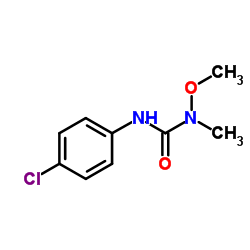Determination of phenylurea herbicides in aqueous samples using partitioned dispersive liquid-liquid microextraction.
Tso-Ying Chou, Shu-Ling Lin, Ming-Ren Fuh, Tso-Ying Chou, Shu-Ling Lin, Ming-Ren Fuh
文献索引:Talanta 80(2) , 493-8, (2009)
全文:HTML全文
摘要
Partitioned dispersive liquid-liquid microextraction (PDLLME), using THF as the dispersive solvent and dichloromethane as the extraction solvent, was utilized to isolate and concentrate phenylurea herbicides (PUHs) from aqueous samples. In PDLLME, a dispersive solvent should be able to partition in the organic extractant droplets to effectively extract the polar organic compounds from aqueous samples. The mixture of the water-immiscible extractant and the partitioned dispersive solvent was obtained by centrifugation, dried under low pressure, reconstituted in methanol-water mixture (1:1), and injected into a HPLC system for the determination of PUHs. The enrichment factors of the PUHs ranged from 68 to 126 under the optimal conditions. The linear range was 0.5-100 ng ml(-1) for each analyte, the relative standard deviations of PUHs were in the range of 1.5-5.9% (n=5), and the detection limits (signal-to-noise ratio of 3) ranged from 0.10 to 0.28 ng ml(-1) for the herbicides. The range of intraday precision (n=5) for PUHs at the levels of 0.5, 5, and 50 ng ml(-1) were 3.0-5.9%, 1.8-3.3%, and 2.2-3.6%, respectively. The range of interday precision (n=5) at 0.5, 5, and 50 ng ml(-1) were 0.4-1.8%, 1.2-2.4%, and 0.9-2.3%, respectively. The recoveries of PUHs from three spiked river water samples, at a level of 10 ng ml(-1), were 91.2-104.1%. Due to its rapidity, ease of operation, and high recovery, PDLLME can be utilized to isolate and concentrate organic environmental contaminants such as PUHs from aqueous samples.
相关化合物
| 结构式 | 名称/CAS号 | 分子式 | 全部文献 |
|---|---|---|---|
 |
绿谷隆
CAS:1746-81-2 |
C9H11ClN2O2 |
|
High efficiency polyethylene glycol diacrylate monoliths for...
2014-10-17 [J. Chromatogr. A. 1364 , 96-106, (2014)] |
|
Sonochemical and sonocatalytic degradation of monolinuron in...
2011-01-01 [Ultrason. Sonochem. 18(5) , 1107-12, (2011)] |
|
Investigation of photodegradation and hydrolysis of selected...
2011-07-01 [Environ. Sci. Pollut. Res. Int. 18(6) , 949-57, (2011)] |
|
Linuron and monolinuron.
1981-01-01 [Residue Rev. 77 , 1-364, (1981)] |
|
Direct determination of monolinuron, linuron and chlorbromur...
2003-09-05 [J. Chromatogr. A. 1011(1-2) , 143-53, (2003)] |